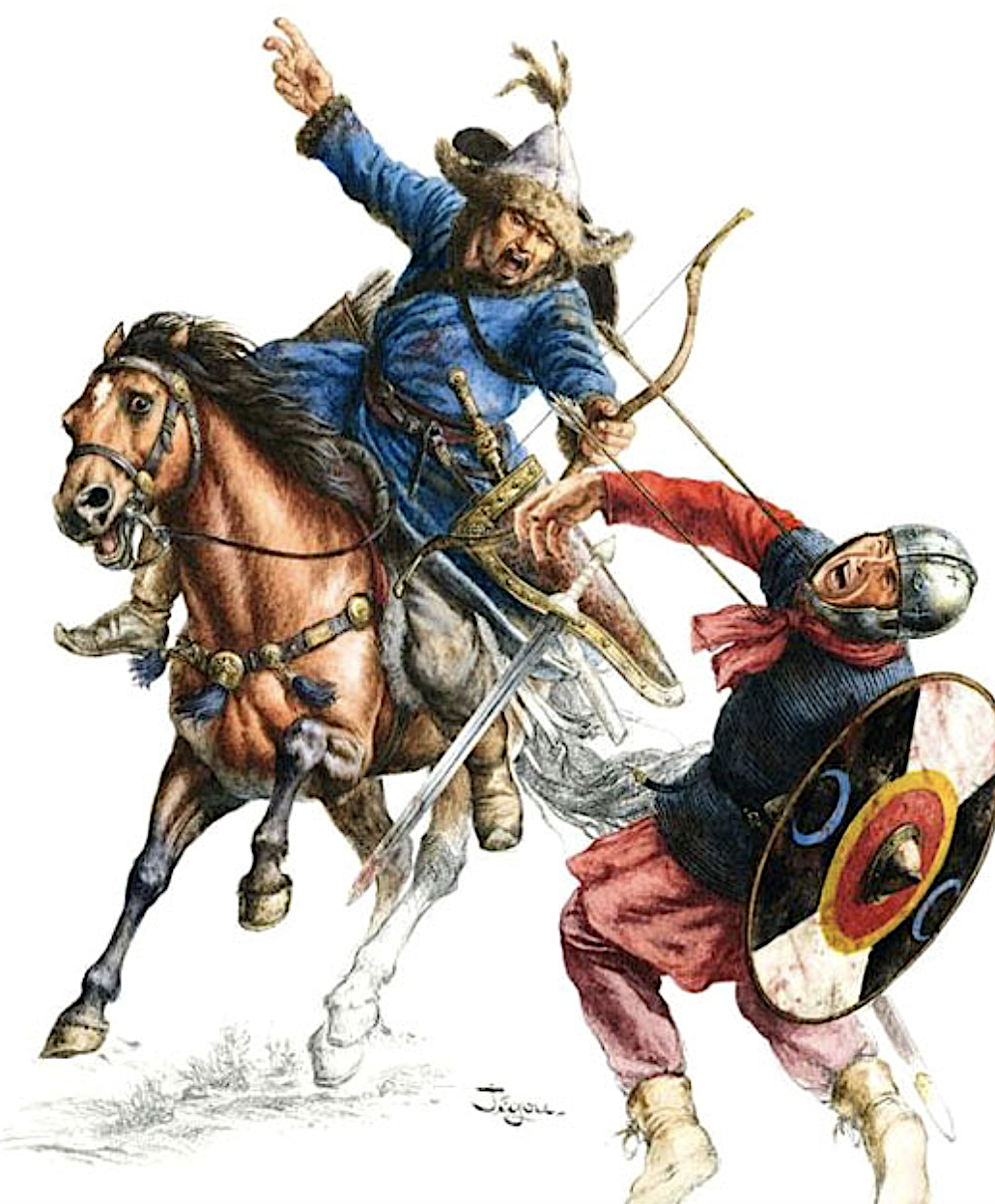10 Amazing But True Facts About Attila and the Huns

The Huns Practiced Cranial Deformation
The Huns deliberately deformed the skulls of their infants by binding them tightly between two pieces of wood or wrapping them tightly in cloth. Among the Huns, the resulting elongated skulls were seen as signs of intelligence and status, but to outsiders they were seen as ugly and unsettling. The Roman historian Ammianus Marcellinus called them “monstrous”. The practice was briefly adopted by some of the tribes conquered by the Huns but was abandoned after the Huns faded from influence.
The Huns Mutilated Themselves to Express Grief
Roman historians Jordanes and Priscus wrote about a bizarre Hun funeral practice in which warriors deliberately gashed their own cheeks with knives and tore out chunks of their hair to express their anguish. They referred to it as "crying tears of blood", and the resulting scars would live on as lifelong reminders of their sorrow. As if that weren’t enough violence and bloodshed for one funeral, the grave diggers were put to death to keep the deceased’s grave site a secret.
The Huns Rarely if Ever Changed Their Clothes
According to Roman historian Ammianus Marcellinus, the Huns wore tunics made of the skins of field mice sewn together and wore them continuously until they had been reduced to rags and were falling off their bodies. In a world where the reek of body odor was commonplace this must have been a particularly fulsome odor. Later, as the Huns built up their wealth from plunder, higher status individuals graduated to robes made of silks or linens, but the average Hun still wore more rudimentary garments and rarely changed them.
The Huns Were Highly Skilled at Embroidery
Priscus visited Attila’s court in 448 AD where he took note of their skills at embroidery. As noted above, the Huns were adept at sewing patchworks of skins together to form garments. This skill lent itself to the art of embroidery where they used colored threads and appliques to adorn their clothing. In addition, the Huns were skilled goldsmiths and made exquisite jewelry inlaid with beads and gemstones. Ironically, as barbaric as the Huns were, they were also skilled artisans and craftsmen.
The Huns Possessed Superior Military Technology
It was the Huns’ expertise as bowmakers that first gave them an advantage over rival tribes on the Pontic Steppe (modern day Kazakhstan and Moldova) before they migrated west into Europe. The Hun’s composite bow was a giant step forward in military technology. Made of multiple pieces glued together rather than a single piece of wood, the Hun bow was a recurve bow with limbs that curved away from the archer, delivering greater power and accuracy. Combined with the Huns’ unmatched skill as mounted archers, the bow became a versatile and deadly weapon and helped the Huns defeat many enemies in the field, including the Romans.
The Huns Engaged in “Total War”
The military concept of “total war” is often referred to in modern contexts, such as the destruction of Germany and Japan in World War II, but the Huns practiced “total war” in the 5th century when they invaded Europe. “Total war” refers to the annihilation of civilian as well as military targets in an attempt to break an enemy’s will. The Huns raped and pillaged before burning whole cities to the ground. They gave no quarter and accepted no surrender. Some cities, such as Aquileia in northern Italy, were completely wiped off the map.
The Huns Destroyed Scores of Cities Throughout Europe
In the 19 years of Attila’s rule the Huns left a path destruction from the Black Sea to France before turning south and attacking northern Italy. Prior to moving west the Huns had ravaged the Balkans as far south as Greece. It’s estimated that the Huns destroyed upwards of 70 cities throughout Europe, a scale of destruction not seen again until the 20th
century.
The Huns Were Not Interested in Conquest
As a nomadic people the idea of seizing and holding territory was foreign to the Huns. However, the idea of exploiting resources was front and center. The Huns weren’t interested in conquering enemies to possess their land. They wanted to rob and intimidate them. At its most basic this meant stealing livestock and taking slaves, but Attila introduced a more sophisticated method of plunder when he used the threat of destruction to extort gold from his enemies, basically saying “pay us or suffer the consequences”. In effect the Huns were running a giant protection racket. Calling them warriors, crusaders, or soldiers isn't quite right. They were more like thugs and brigands.
Attila Did Not Die a Hero in Battle But Mysteriously in Bed
The most fearsome warlord the world has ever known died unexpectedly in bed on his wedding night at the age of 47. He was found covered in blood with his weeping bride beside him. She was accused of poisoning him, but some historians think he may have suffered an internal hemorrhage and died of natural causes. In either case he did not die gloriously in battle but under the most mundane of circumstances.
Within 13 Years of Attila’s Death the Huns Were Completely Eradicated and Ceased to Exist
Attila built a massive force of 200,000 men, the ultimate barbarian horde. However, he did it by conquering rival tribes and forcing them into servitude as vassals. Upon his death his three sons were unable to intimidate the vassals into compliance and the vassals revolted. Over the next several years these tribes threw off the Hunnic yoke and sought revenge. Within 13 years, all three of Attila's sons were killed and the Huns were scattered. Their remnants were eventually absorbed into other tribes and the Huns ceased to exist as a separate entity. Attila’s great legacy was reduced to dust and ashes, and Europe's decades long nightmare came to an abrupt end.
